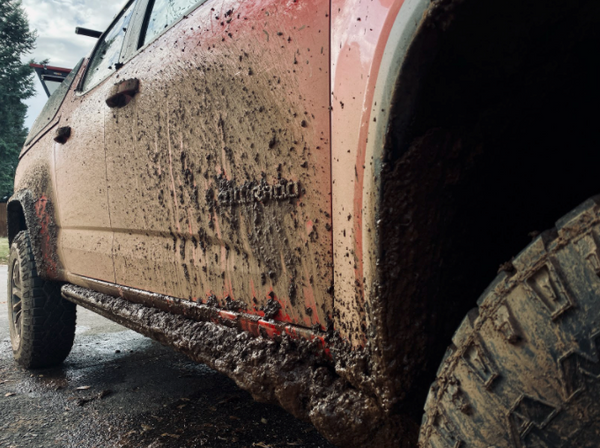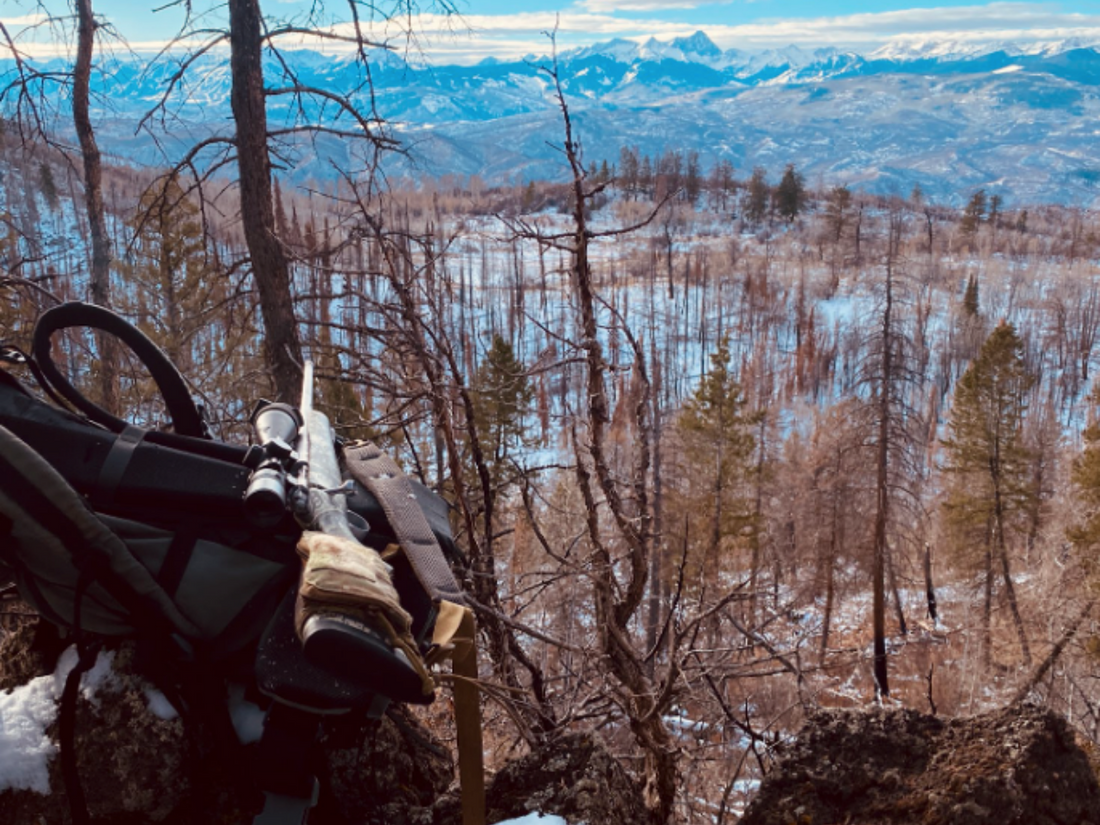By Mahting Putelis
Spending the last ten autumns weaving between aspens and pines taught me a few things about life and elk. Much like elk balance their time between the security of dark timber and lush, forage-filled aspen stands, humans need to strike a balance between the office and the wilderness. For many hunters, stepping into Wilderness is their vacation. However, if you haven't properly prepared for the experience, it’s bound to be more painful than a bad day at the office.

To be transparent, and knowing that people judge success in a myriad of ways, I feel inclined to share my dead elk rate: 7/10. Those seven elk taught me a lot, but so did the three seasons of tag soup. Some of their teachings stand out to me because they go against the grain of what other hunters have shared. Other notes have morphed into hard and fast rules. For hunters who are traveling into new locations with limited boots-on-the-ground knowledge of the area, I would like to share some advice that may serve you well in the field. I hope the tenets I share give you the ability to find more moments to cherish while you hunt.
Be an Ultra-Marathoner
Only run as your training for western elk hunting. The industry loves to talk about and push gym training and weights. While I'll give them credit for shifting towards functional weight workouts, their focus is still on gym time and building muscles. This year, and the majority of the last ten years, I have spent almost zero time in the gym.
During my first first three years of hunting, I was a highly trained road cyclist, completing more than 150 miles on the bike every week. After retiring from bike racing, I picked up running, completing my first Ultra, a 50 kilometer race, in 2014, and attempting my first 100-miler this summer. I made it 80 miles.
This tenth elk hunting season proved to be one of my hardest. I hunted hard until the last day of the season. I was finally able to feed that bull his last meal before he took his long walk to the meadow behind the sun. Below is a breakdown of the mileage I did every day:

My daily pack weight is around 15 pounds. Lightweight gear makes that possible. Strong ankles from playing hockey and rollerblading during my youth coupled with the trail running I do today makes all the side-hilling not so bad. My ability to walk across a talus field (also known as a boulder or scree field) stepping from one tiny, unbalanced point to the next without the use of my hands has come in handy countless times. I did that a lot this season; the rocks were mostly snow-covered, which made it extra spicy.
I only carried a heavy pack on the last day for a total of 8.6 miles. Two 4.3 mile trips with my pack weighing roughly 75 pounds, and 55 pounds respectively on each carry. Where is the rest of the weight? I'll touch on that later. I had to pick up and put the pack on roughly 10 times with my rest stops. This is where I ask the industry: why do I need to do deadlifts? The critical factor in my successful week was being able to get out, day after day, and walk about 10 miles and 2,500 vertical feet. Simply put, that is just a good trail-run for me. If you've only got an hour to dedicate every day to training for your western elk hunt, become a runner or a hiker. The fastest way to ruin a western hunt is to be unable to walk all day; I have seen it too many times to count. If you have more time and commitment, then of course, do more to become a well-rounded athlete.
Drive in as far as you can
Getting to the hunt spot is important. Getting as far as a truck can go is going to save you miles of walking. That extra mile is an extra two miles every day. Over my week of hunting, it was an extra 14 miles. This year, I had a fancy 4x4 rig and well, it just wasn't going to make it. I ended up borrowing my buddy’s more rugged 4x4 truck. For next season, I already bought myself an old truck. It's nothing fancy; in fact, it's beat up. But it will get me that last mile.

Bring extra layers and down insulation
I wear lightweight hooded merino shirts while hunting. I always pack a second one, too. This is a trick I learned from my mentor, AKA my big brother. Start your hike cold. You're likely going uphill, so you'll warm up quickly and break a sweat. When you end up at the top of the mountain, you’ll be in a really sweaty, wet shirt. Once you're up top, you're going to sit and glass for elk. You’ll get cold sitting in a wet shirt no matter how good your down jacket is. Instead, strip off that wet layer and trade it for a dry one. Boom! You're warm, dry, and with a good lightweight puffy, you'll sit comfortably for a long time looking for animals. Given that this is a scenario that repeats all the time, I don't mess with a lot of mid-layers. I'm either moving and warm, or sitting and trying to stay warm. If anything, I carry two down jackets to be really warm.
Pack knives and sharpener
Having not gotten an elk last year, I somehow forgot how quickly an elk dulls knives. My fixed blade can get me through a deer, but I forgot to sharpen it and it lasted about five minutes. I even had my Havalon Piranta, but I only had a couple extra blades. After a blade snapped, the other dulled, and a third dulled on the head meat, I was down to just forcing it. Forcing cuts with a dull blade is a great way to have an accident. I have already purchased a small Lansky field sharpener for my kill kit.
Eat what you love
I've been called The Candy King by my hunting partners before. Remember, this is a cursory take on this subject: you're not out in the woods to diet. Could I be healthier in the field? Sure. But this works for me. Here is what my food intake looked like each day this week:
- Oatmeal and coffee for breakfast
- Pop Tarts and coffee for a 10 am snack
- Sardines, cheese, and bagels or crackers for lunch.
- A huge dinner
- Snacks including Rice Crispy Treats, Chewy Chocolate Chip Granola Bars, and fruit snacks
In the mountains, your body is a sports car. You need high octane fuel to keep the machine moving. Sugar is a high octane fuel. Bring a lot of snacks and eat often. You could keep your energy levels high a lot of other ways; become fat-adapted, maintain ketosis, pack in a highly specialized diet, etc. In my opinion, you shouldn’t. The effort you spend in maintaining your diet will decrease the effort you can spend hunting. Most importantly, you can't do this before the hunt. Before the hunt, you do actually want to get in shape. Take in less calories every day than you burn and exercise more often.
Drink warm liquids
When it's cold outside, it's really hard for me to drink cold water to stay hydrated. I start the morning with a full thermos of coffee. If you believe the myth that water is the only thing that will hydrate you, well, I can't help that. For me, it's important that I just keep drinking anything, the more calories, the better. I also carry a small titanium cup with an MSR PocketRocket stove to make coffee or hot chocolate midday.
Foster and nourish your community
Do you ever wonder what it's like to carry out an entire elk from deep in the backcountry by yourself? It's an experience worth having, if only to teach you how important good friendships are. I made it out of the backcountry on two trips because of good friends. I mentioned my pack weight earlier, but the third and most important pack weight was that of Ryan’s. He carried out one load that was 104 pounds. We weighed it when we got to his house. Together, we ended up getting an entire bull elk out in three backpacks, mostly boned out. Make sure to show your appreciation for your friends’ effort and be willing to return the favor in the future.

Persevere
Day after day of putting in miles in the snow, falling on rocks, messing up stalks, forgetting to eat enough, exhaustion, being cold and wet - it all wears you down. There were times where I was almost brought to tears. What you do in the next moment is what matters. I sat down a few times and just looked at the trees, had a drink of coffee, and relaxed. Then, I got up and kept hunting. Having attempted a 100-mile run this summer, I raised the bar on my suffering meter. In the last two miles of the week, I thought to myself, this isn't as bad as mile 65 was during the night of the 100 miler. That might seem like a silly comparison, but hunting is not easy. When it is easy, enjoy the hell out of it.

Be joyful
Joy is a choice. When you are hunting, you shouldn't be in a rush. If you are, you're likely missing the elk that's watching you walk too quickly and loudly through the woods. Slow down and make a conscious choice to find joy in the little things. I stood staring, blankly lost in thought about wildfires, when all of a sudden a bird, a Brown Creeper, landed on my rifle and then on the pine right in front of my face. It hopped around the trunk looking for something to eat. Her long, curved beak searched for the next meal.
These types of interactions with other creatures stand out to me just as much as the moments interacting with elk. They have more joy associated with them because they don't have assumed outcomes attached to them. Practice joy in the field and you'll come away with a more memorable experience, punched tag or not.

Celebrate
I hope that your hunt ends as mine did with an elk laying on the ground after dying a quick death. Take some time at this moment to sit in quiet reflection. I have a practice of offering the animal a last meal. I take a handful of what I think it was eating before it died and place it in its mouth as an act of gratitude and respect. In my belief system the energy of that being is moving on to a place, behind the sun, and it will need that final meal to make it there. I say a short prayer in which I ask it to sit at the table with god and hold my seat for me, for I still have other adventures ahead of me and will use him to sustain me through them.

I think that these moments, the kill and right after, are what separate hunters and non-hunters. They are moments that no other group of people experience in the wild. The cause and effect of the trigger pull; the contemplation of taking a life and being able to follow through on that intention; the simultaneous grief and joy of death. Make time for your own ceremony, create it, engage it, hold it sacred.



